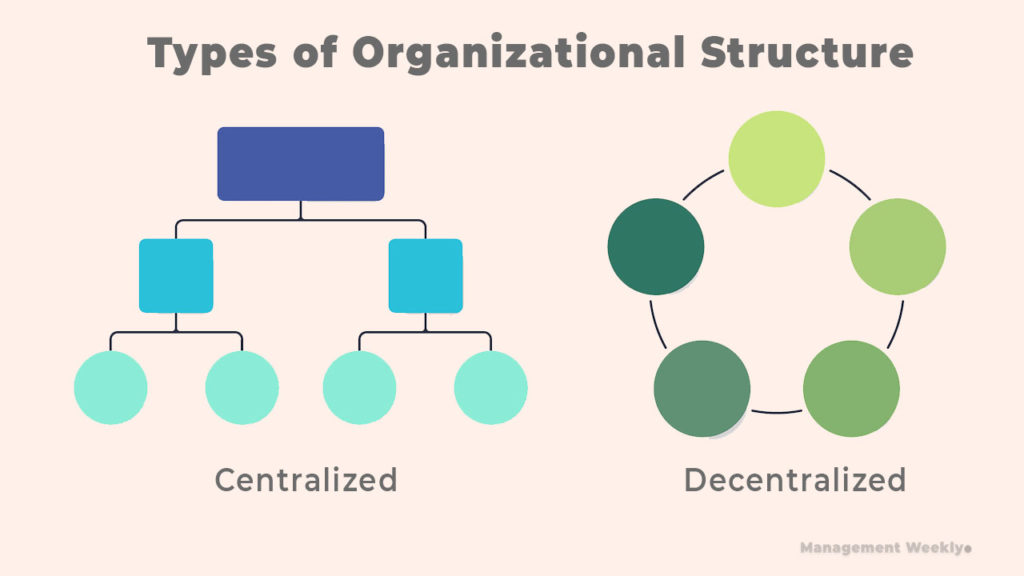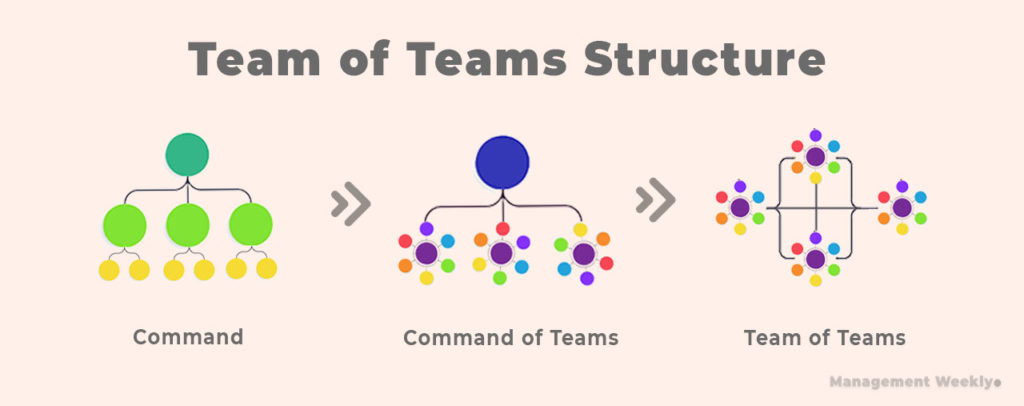The year was 2004. The United States Army entered a complicated combat. The combat was very different from any other. They were facing the terror organization Al Qaeda. What was different in this case? Why did the US Army find it so challenging to wage a war against ill-equipped and seemingly backward organization? Read this article to find out more about organizational structure. A comparison of centralized vs decentralized organization shows us that which type of structure is better in specific situations.
Centralized and Decentralized Organizational Structure
An organized set of individuals, teams and business units constitutes a firm. These entities come together in providing products and services for the customers. A firm’s activities create product and services for the customers. Moreover, these activities require some management of roles and responsibilities. An ‘organizational structure’ is like a diagram that shows how these activities are orchestrated.
A centralized organization is one where there is top down approach. The higher-ranking managers have higher control over the lower ones. The ideation, strategy and execution trickles down this hierarchy. This structure is similar to how the armies have been traditionally organized.
On the other hand, decentralization is achieved when the decision-making authority is distributed to lower ranking managers. This gives them more autonomy to take decisions. Although, it helps in agility and increases innovation, there are some drawbacks as well. Decentralized organizations may increase the redundancy. There may also be miscommunication, conflicting objectives and inefficiencies.
Chart for Centralized vs Decentralized Organization

The above diagram shows the central organizational chart. The chart compares it to the decentralized organization. As you can see, the centralized organization has a central command of authority. On the other hand, the decentralized organization has a distributed command of authority.
Advantages of Centralized Organization
- Centralized organizations are more efficient in terms of resource utilization
- Higher coherence in terms of meeting organizational objectives. Employees are better aligned to the mission and vision.
- Efficient structure of direction and authority. The decision making is centralized and it helps in staying focused due to a centralized chain of command.
- Execution time is lower.
- Reduced inefficiency in work, data and personnel.
The Disadvantages of a Centralized Organizational Structure
- It reduces innovation in individuals.
- Reduces the speed of response to external changes.
- Higher tendency to please seniors rather than meet organizational objectives.
- Inputs from lower level employees may never reach the top management.
- May reduce the learning of low and mid-level managers. A major component of learning is through decision making and feedback. The autonomy for making decisions is lower in a centralized organization.
Advantages of Decentralized Organization
- Increases creativity and innovation in individuals. Lesser control is shown to make people more creative.
- Leads to higher motivation, job satisfaction and wellbeing in employees. Also, helps in training future leaders who are confident about their decisions.
- This structure is very useful in tapping on to the expertise of individuals.
- The perception of threat is faster. Decision making to combat the threats is also faster.
- It frees the top managers from making smaller decisions. These small decisions may wear out the top management in a centralized organization. Therefore, they are free to focus all their energy on important decisions.
The Disadvantages of a Decentralized Organizational Structure
The disadvantages of a centralized organizational structure include the following:
- Increased chances of miscommunication.
- Possibility of conflicting objectives between different teams in the same organization.
- Competition within teams inside the organization, leading to lower trust and information sharing between teams.
- Duplicated projects, increasing redundancy.
- Information silos, especially for tacit knowledge.
US Army vs Al Qaeda – a golden lesson in organizational design
The Al Qaeda was structured as a formidable force. Firstly, the organization was designed like a network of small teams. These teams defied the traditional army structure and hierarchy. This allowed them independence and spontaneity. As a whole, they were unpredictable bunch of guerrilla warriors. Extremely difficult for the allied forces to understand and fight. This type of organization is essentially a decentralized structure. It provides higher agility and ability to adapt better to the changes. It is relatively new way of looking at centralized vs decentralized organization.
Finally, the United States Army, adapted themselves into a new structure. They developed a hybrid approach. The book ‘Team of Teams’ talks about the history of this war and how this structure helped America register a victory against the formidable force. A team of teams is an organizational structure where organization works as a network of smaller, independent teams. They are connected with each other but function independently. This offers the middle ground between the centralization vs decentralized organization.

The Benefits of Team of Teams Structure
- Higher trust in the individuals
- Increased coherence towards the firm’s goals and objectives
- Rapid decision making
- Faster information dissemination
- Higher adaptability
